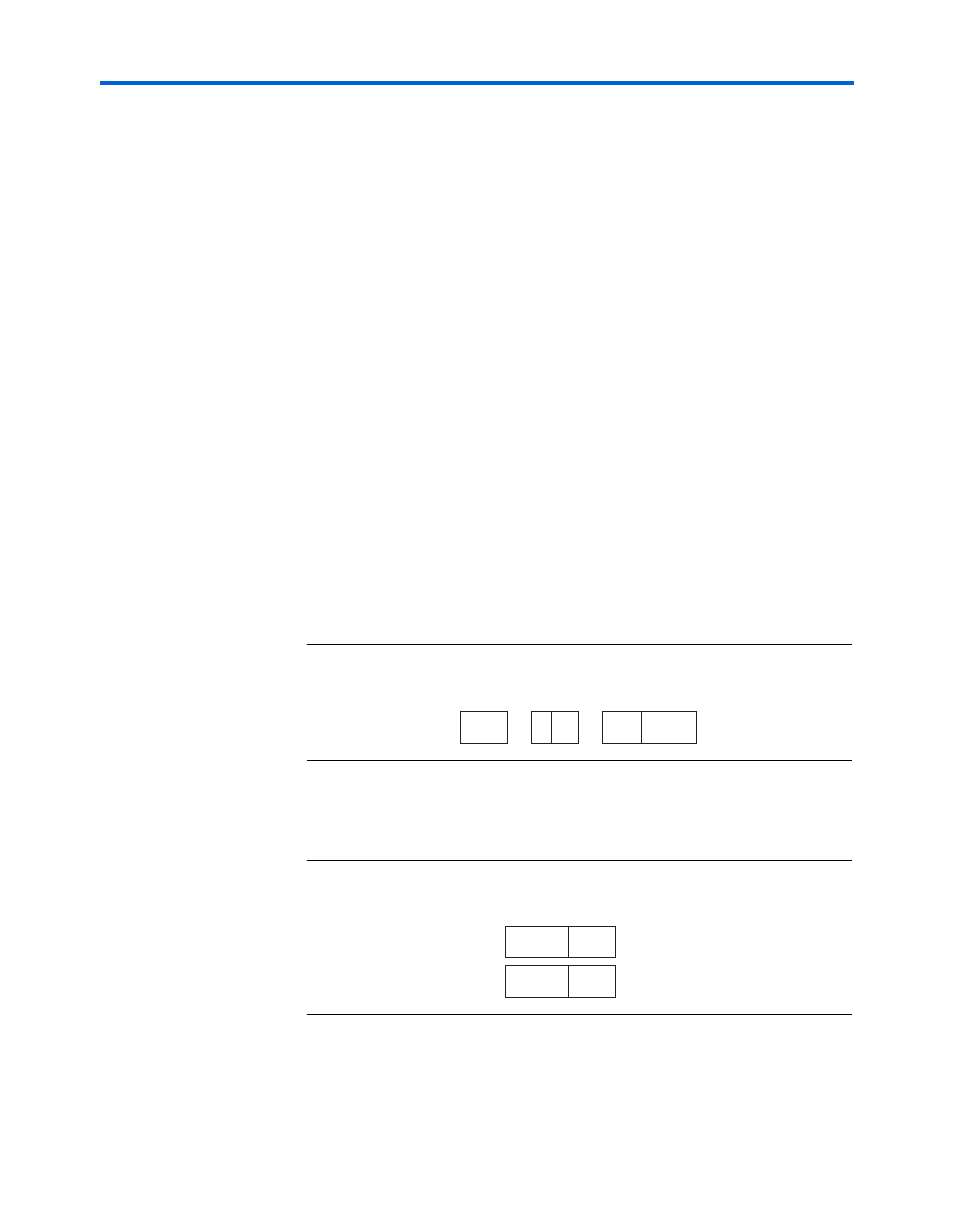Notation convention – Altera SerialLite II Protocol User Manual
Page 17

Altera Corporation
17
SerialLite II Protocol Reference Manual
SerialLite II Specification
There are two categories of code group:
■
Data code-groups: Any 8-bit byte can be converted into a 10-bit
encoded character.
■
Special code-groups: A limited number of 8-bit values can be
converted into 10-bit control characters.
When a control byte is to be encoded, a separate signal must be asserted
to inform the encoder that it must generate a special code-group, not a
data code-group.
Notation Convention
The 8B/10B transmission scheme uses letter notation to describe the bits
of an unencoded information byte and the one-bit control variable. The
control variable is set to 1 to select a K value from the special code-groups;
it is not set for the D value of the data code-groups. Code-groups are
indicated by the notation ‘Dx.y’ or ‘Kx.y’. See
for a listing of the possible values and encodings.
The bit notation of HGF EDCBA is used to indicate the bits of the
unencoded 8-bit value, where A is the least-significant bit (LSB), as shown
in
.
Figure 2–6. Character Notation Example of D30.4
The HGF EDCBA bits are translated to the abcdei fghj bits of the 10-bit
transmission code-groups, as shown in
.
Figure 2–7. Code-Group Notation Example of D30.4
HGF EDCBA
Dx.y
D30.4
y
x
4 30
100
11110
fghj
abcdei
0010
011110
1101
100001
RD-
RD+
